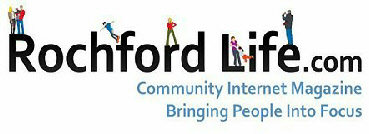Talk to us here at Rochford Life : 0786 342 7294 or E-mail us. For other numbers see individual pages.


Make a point of visiting us weekly! Tell a friend about us.
This is the continuation of Penny’s series in new Technologies - see introduction on previous page.
6. Twelve New Technologies (Page 3)
Page 1 (1-
To return to Penny’s ‘front’ page, please CLICK HERE
12. Motion Capture
Now this last one is a paradox for me. Motion Capture in film allows someone to don a suit with sensors all over it, look incredibly silly – and create images on the screen that blow the mind. Almost all of the next generation games use this technique to allow the use of real actor performance – and now the film industry is clocking on that although shooting a film using motion capture is a strenuous process, it is a highly useful tool.
Right – how it works. Imagine there is an actor in front of you. Now imagine they are wearing a leotard or something similar (easy to do if this person is Sam Worthington I suppose) – because the less extra clothing, the easier the process. Now imagine that they are covered in small motion sensing microdots from head to toe – perhaps including the face (a camera rig will often have to be used to record facial expression). These dots will sense any movement this person will make and record it onto a computer. A director of a film will then see a digital rendering of this person on a crude screen and then direct accordingly. So – we have this information recorded of someone’s movement – and now imagine we are immersed in the post-production stage of a film.
A digital artist can then change this actor’s appearance to match any design that the director has chosen e.g. the Na’vi from Avatar, Younger Jeff Bridges/Clu from Tron Legacy or Gollum from the Lord of the Rings. All of these creatures/characters are played by a real person and this image has been designed over them to mimic their movements. What results is the most realistic digital character performance that anyone will ever see. Even the facial features can be incorporated in the filming process.
It’s a great tool, and I love it because digital performances are no longer the artist assuming what a character will look like – he will instead have a real/talented actor to design over.
The reason why this technology is a paradox is because there is a frightening possibility looming in the future. It has been said that this process could replace actors altogether. I for one believe that actors will always need to be used, even only for reference. Nothing can replace a good character actors performance. No digital Michael C. Hall as Dexter, no digital Colin Firth as King George the IV and no digital Signourney Weaver as Ellen Ripley.
Lets hope that those in film remember this. We’re already getting digital monsters because some filmmakers are a bit lazy. I won’t mention the films in question...
New technology is brilliant, but you must never forget what came before it and never just go for something because everyone else is, or that you simply have to play with the newest gadget. Try everything and open your mind to possibilities that you probably haven’t considered before.
We live in an exciting time – and we’ve all seen those films over the years that have imagined the 21st century to be the time of flying cars, teleportation or perhaps mass cloning. I’d love to jump into a time machine and tell them back in the sixties – ‘we’re not there yet, but we have plenty to amuse us until the time comes’.
Top of page
Return to Penny’s front page
Now this last one is a paradox for me. Motion Capture in film allows someone to don a suit with sensors all over it, look incredibly silly – and create images on the screen that blow the mind. Almost all of the next generation games use this technique to allow the use of real actor performance – and now the film industry is clocking on that although shooting a film using motion capture is a strenuous process, it is a highly useful tool.
Right – how it works. Imagine there is an actor in front of you. Now imagine they are wearing a leotard or something similar (easy to do if this person is Sam Worthington I suppose) – because the less extra clothing, the easier the process. Now imagine that they are covered in small motion sensing microdots from head to toe – perhaps including the face (a camera rig will often have to be used to record facial expression). These dots will sense any movement this person will make and record it onto a computer. A director of a film will then see a digital rendering of this person on a crude screen and then direct accordingly. So – we have this information recorded of someone’s movement – and now imagine we are immersed in the post-
A digital artist can then change this actor’s appearance to match any design that the director has chosen e.g. the Na’vi from Avatar, Younger Jeff Bridges/Clu from Tron Legacy or Gollum from the Lord of the Rings. All of these creatures/characters are played by a real person and this image has been designed over them to mimic their movements. What results is the most realistic digital character performance that anyone will ever see. Even the facial features can be incorporated in the filming process.
It’s a great tool, and I love it because digital performances are no longer the artist assuming what a character will look like – he will instead have a real/talented actor to design over.
The reason why this technology is a paradox is because there is a frightening possibility looming in the future. It has been said that this process could replace actors altogether. I for one believe that actors will always need to be used, even only for reference. Nothing can replace a good character actors performance. No digital Michael C. Hall as Dexter, no digital Colin Firth as King George the IV and no digital Signourney Weaver as Ellen Ripley.
Lets hope that those in film remember this. We’re already getting digital monsters because some filmmakers are a bit lazy. I won’t mention the films in question...
New technology is brilliant, but you must never forget what came before it and never just go for something because everyone else is, or that you simply have to play with the newest gadget. Try everything and open your mind to possibilities that you probably haven’t considered before.
We live in an exciting time – and we’ve all seen those films over the years that have imagined the 21st century to be the time of flying cars, teleportation or perhaps mass cloning. I’d love to jump into a time machine and tell them back in the sixties – ‘we’re not there yet, but we have plenty to amuse us until the time comes’.
Top of page
Return to Penny’s front page
Penny Glen Investigates
